IRGC Adds New Military Vessels To Its Navy Fleet
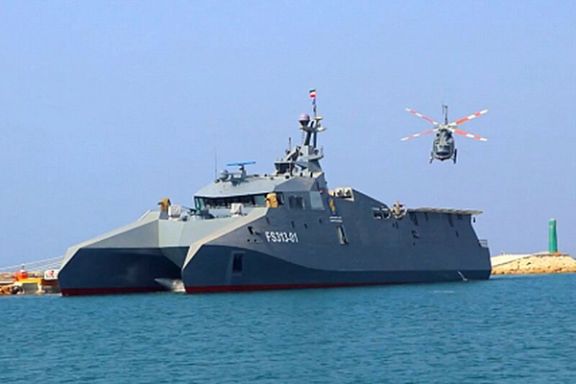
Iran’s Revolutionary Guard (IRGC) navy has added three new military vessels to its fleet including a patrol combat warship named after Qasem Soleimani, killed by a targeted US air strike in 2020.

Iran’s Revolutionary Guard (IRGC) navy has added three new military vessels to its fleet including a patrol combat warship named after Qasem Soleimani, killed by a targeted US air strike in 2020.
Addressing the unveiling ceremony in the southern Iranian port city of Bandar Abbas on Monday, Major General Mohammad Bagheri, Iran's chief of staff for the Armed Forces, said the Soleimani patrol combat warship is a multi-hulled watercraft that can carry choppers and can unload strike speedboats and vertical take-off and landing (VTOL) drones, adding that it is the first Iranian military vessel equipped with air defense missiles with a vertical launching system that can fire mid- and short-range missiles.
He claimed that the hull of Shahid Soleimani-class missile corvette is made with radar-evading stealth technology construction techniques, meaning that it has a very low level of radar cross-section thanks to its shape.
In addition to Bagheri, the IRGC Chief Commander Major General Hossein Salami, Commander of the IRGC Navy Rear Admiral Alireza Tangsiri and a number of other high-ranking military officials, commanders and state officials attended the ceremony.
The IRGC Navy also delivered Shahid Rouhi and Shahid Dara high-speed and missile-launching assault boats.
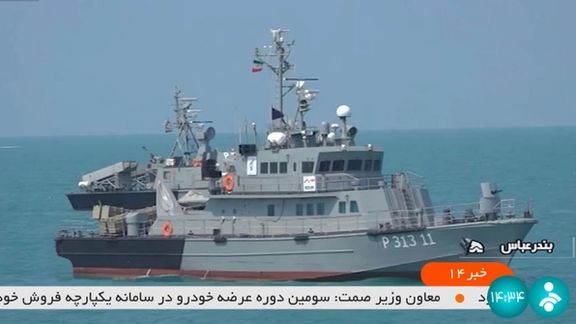

In July, the United States Naval Institute published satellite photos showing that Iran was constructing new stealth missile boats on the island of Qeshm in the Strait of Hormuz in the Persian Gulf.
On Sunday, two surface-to-surface missile launchers, one logistic vessel and one Ghadir-class submarine were added to the South Fleet of the Iranian Army Navy of the country.
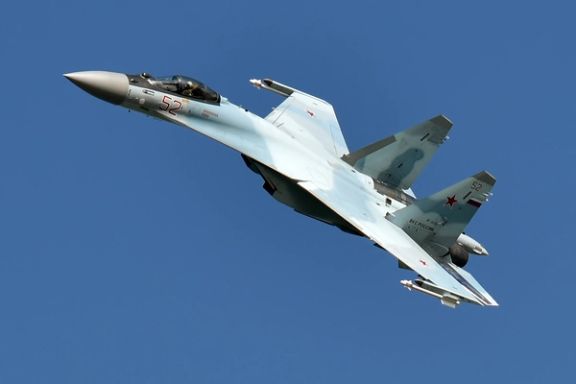
The Commander of the Iranian Army’s Air Force has confirmed that the Islamic Republic is seeking to purchase Sukhoi Su-35 fighter jets from Russia.
Brigadier General Hamid Vahedi said on Monday that buying Su-35s is on the agenda of the Air Force but the country has no plans to buy Sukhoi Su-30s, both developed from Sukhoi Su-27 which was a Soviet-origin twin-engine supermaneuverable fighter aircraft. Su-35 is single-seat but Su-30 is a two-seat, multi-role fighter.
According to reports, the Army’s Air Force needs at least 64 aircraft, 24 of which will come from Egypt's order which remained undelivered due to US pressure on Cairo.
Tehran-Moscow deals for drones, satellites and other aviation equipment have been increasing in recent months. Russia not only launched a satellite for Iran in August, but its personnel were also reportedly sent to train on Iranian military drones to use in Ukraine.
As tensions remain high between Washington and Tehran, the United States military said earlier in the day that it flew a pair of nuclear-capable B-52 long-distance bombers over the Middle East in a show of force, the latest such mission in the region as tensions remain high between Washington and Tehran.
The bombers took off from the Royal Air Force base at Fairford, England, and flew over the eastern Mediterranean, the Arabian Peninsula and the Red Sea on Sunday in training missions together with Kuwaiti and Saudi warplanes. Three Israeli F-16 fighter jets accompanied the American bombers “through Israel’s skies on their way to the Persian Gulf,” the Israeli military said, describing the country’s cooperation with the US military as key to “maintaining aerial security in Israel and the Middle East.”

As Iran claims it can help Europe with its energy crisis, a new report shows Iranian industry lost $7 billion last year due to shortages of gas and electricity.
Amid nuclear talks with the West, Iran has hardened its position in recent days and government officials as well as its media have been suggesting that Europe is facing a winter energy shortage that Iran can help alleviate if a deal is reached and US sanctions lifted.
But the relatively independent Shargh newspaper in Tehran has published a report based on official statistics saying that shortages of gas and electricity cost Iranian businesses billions of dollars in losses in 2021-2022.
The loss equals 10 percent of Iran’s oil and non-oil exports that generate desperately needed foreign currency.
The government facing both a natural gas shortage and inadequate electricity generation decided not to reduce supplies to homes, which was common during the last years of the former administration. Instead, industries were deprived of electricity in peak summer months and gas in the winter.
Iran’s petrochemical sector needs natural gas to operate, and they sustained losses because of shortages. The other export-oriented sector, the steel industry needs a lot of electricity, and some plants were intermittently idle in the past 15 months.
Shargh quoted figures from the energy ministry saying that electricity imports from neighboring countries increased by 51 percent in June-July 2022, compared with the same period last year, while exports decreased by 60 percent.

Iran holds the world’s second largest natural gas reserves, but its energy shortage is mainly due to two self-made problems, emanating mostly from its confrontational foreign policy that deprives the government from income and investments.
Iran’s gas production is gradually falling as natural pressure in its South Pars fields is dropping and it needs technological help from Western energy giants to build larger platforms with stronger pumps to get the gas out. This in turn needs either partnership deals or Iranian cashinvestments to the tune of $50 billion.
But because of its long-running confrontation with the West, primarily the United States, and its nuclear program seen as a serious threat, Iran has not been able to benefit from Western technology and investments. Recently, it is trying to import gas from Russia.
The other serious issue is insufficient electricity generation capacity, which is also largely due to lack of efficient technologies and money for investments. Domestic demand for gas and electricity has been rising, while production has been falling.
Lack of money, price controls and bad planning have also prevented the development of solar energy, which is suitable for a country with more than 300 sunny days in the year.
The rising demand for energy is due to extremely low rates for domestic consumers, which essentially amounts to subsidies that have been in place since the 1980s. The Islamic Republic has been reluctant to erase the subsidy that amounts to more than $50 billion a year because of its closed economic system run by the government.
As the government controls the energy markets and prices, offering very low prices to producers, there is little incentive to invest in power generation, including solar energy.
With an economic crisis prevailing since 2018 when the United States withdrew from the 2015 nuclear agreement and imposed sanctions, it is much harder for the government to reduce energy subsidies. When the government modestly raisied gasoline prices in November 2019 it led to nationwide anti-regime protests in which security forces killed at least 1,500 people.
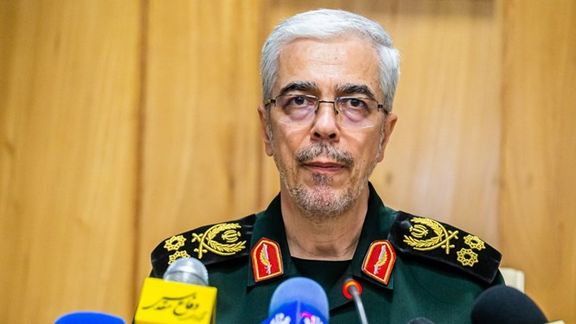
Iran's most senior military commander says the "enemies" endanger the safety of navigation by launching and sending small unmanned reconnaissance maritime drones.
Major General Mohammad Bagheri, the chief of staff for the Armed Forces of the Islamic Republic, made the remarks on Monday referring to a series of encounters between Iranian and United States naval forces last week.
"Enemies are trying to compensate for the reduction of force in the Middle East by creating new units," he said, adding that “They endanger maritime security by dispatching small unmanned surveillance drones, but the armed forces' response to vessels wandering in open waters will be decisive."
He also criticized Israel joining the United States Central Command (CENTCOM), calling it a ‘threat’ for Iran. “We do not tolerate the presence of the Zionist regime," Bagheri said, noting that "We will not make any compromises regarding the rights of the Iranian nation and the security of our seas and lands,"
Iran seized and released two American sea drones in the Red Sea on Friday. Later in the day, US officials reported that Iran returned the two captured maritime drones after being confronted by US destroyers but the unmanned vessels were missing their cameras.
On Tuesday, the US Naval Forces Central Command said that the US Navy prevented a support ship from Iran’s Revolutionary Guard’s Navy -- named Shahid Baziar -- from capturing an unmanned vessel operated by the US 5th Fleet in the Persian Gulf.
Iran’s tough military tone is coupled with its hardening of diplomatic posture in the ongoing talks to revive the 2015 nuclear agreement, the JCPOA.

Iran’s foreign minister held a phone call with his Qatari counterpart to discuss the latest developments regarding the agreement to revive the 2015 nuclear deal.
Hossein Amir-Abdollahian and Qatar’s Mohammed bin Abdulrahman Al Thani talked on Sunday night to review bilateral relations and some consular issues as well as the latest status of the negotiations to restore the Joint Comprehensive Plan of Action – or JCPOA.
According to Qatari sources, Al Thani reiterated Doha’s hope for Iran and the US to reach a consensus to revive the nuclear deal and reaching a fair agreement for all, taking into consideration the concerns of all parties. Al Thani also stressed that this agreement is in the interest of the security and stability of the region.
This was the second phone conversation between Amir-Abdollahian and Al Thani as the agreement on the JCPOA revival seems at a critical stage as Iran has hardened its position in recent days with insisting on demands, such as compensation if the US leaves the agreement or a pledge not to reinstate sanctions, but the Biden Administration has responded that it can only offer assurances to Tehran for the duration of its current term.
On Monday, Iran’s foreign ministry spokesman Nasser Kanaani reiterated Tehran’s harder position in the nuclear talks, insisting on guarantees and an end to a probe into its past activities, that Tehran has once again transmitted its latest to the European Union, which acts as a mediator, and is awaiting a response from Washington.
The United States on August 31 called Iran’s latest response “not constructive”, as soon as it was delivered on the same day.
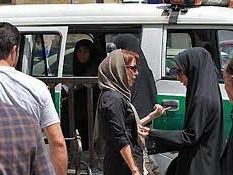
An Iranian government entity enforcing Islamic rules says the intelligence ministry has arrested 300 anti-hijab activist “ringleaders” working “for the enemy.”
Ali Khan-Mohammadi, spokesman of the Enjoining Good and Forbidding Evil Headquarters, said Sunday the activists who worked for “the enemy” and “combated the Islamic Republic’s hijab rules in various ways” were arrested in concurrence with the implementation of the Hijab and Chastity Regulations in government offices, he added.
He did not provide more details, but some social media activists and women who removed their headscarves in public as a sign of protest have been arrested since mid-July.
Hardline media say implementation of the Hijab and Chastity Regulations will soon be more strictly applied in other establishments such as shopping centers. Authorities are also giving more power to law enforcement, security guards in public parks, as well as ordinary citizens to admonish those whose appearance does not conform with the prescribed dress code.
Although the government says “admonishment”, but special morality police scouting the streets actually arrest women for violating the Islamic dress code.
Harsher than usual enforcement of the hijab in the past few months has raised protests from many in Iran including some moderate religious and political figures.
In early July President Ebrahim Raisi ordered the implementation of stricter regulations. He put an ideological spin on the issue and accused foreign enemies of the Islamic Republic and Islam of using extensive satellite TV and social media networks to “target the society’s cultural backbone and foundations of its religious values.”

Khan-Mohammadi, a low-ranking cleric, also alleged that “the enemy” conducts intensive cultural activities against the hijab, including through importing goods and clothing that are against the society’s Islamic norms, and thanked security and intelligence forces for neutralising such plots.
There is no evidence of any foreign conspiracy, except some Iranian activists in the West campaigning against compulsory hijab. One such activist in the United States was even reportedly targeted for kidnapping or assassination by Islamic Republic agents.
The staff of the Enjoining Good and Forbidding Evil Headquarters are trained and responsible for admonishing or detaining citizens, particularly women if Islamic regulations, including hijab rules, are ignored or not abided by.
In the past few months women and anti-hijab activists have come under such intense pressure that even many women who wear the hijab by choice have joined a social media campaign against forced hijab and hijab enforcement street patrols.
Sepideh Rashno, a 28-year-old artist and writer, for instance, was arrested because of an acrimonious dispute with a hijab enforcer in a city bus on July 16 and posting a video of her quarrel with the hijab enforcer on social media which went viral.
She was tortured into denouncing herself and other activists, expressing regrets for her confrontation with the hijab enforcer, and posting the video on social media.
Rashno has not been put on trial yet, but her so-called “confessions” were aired by the state-run television (IRIB) soon after her arrest. She had been so badly beaten before the telecast that bruises were quite visible on her face.
Rashno has been charged with “association and collusion with the intention of committing a crime against the country's security through communication with foreigners and propaganda activity against the Islamic Republic and encouraging people to commit corruption and prostitution" and “propaganda against the Islamic Republic”. Authorities have set Rashno’s bail at a very high sum of 8 billion rials.